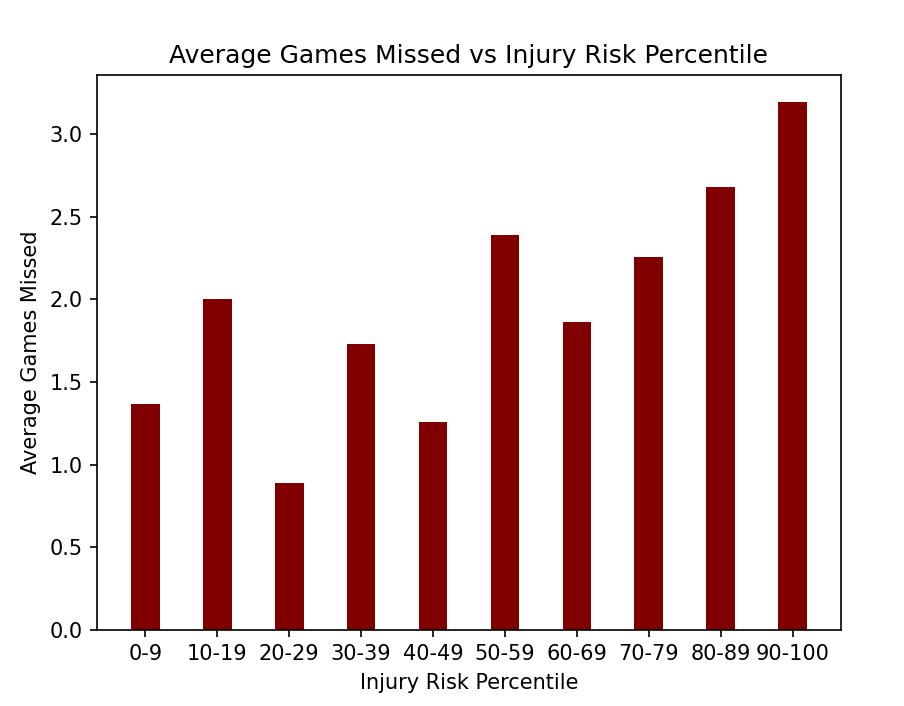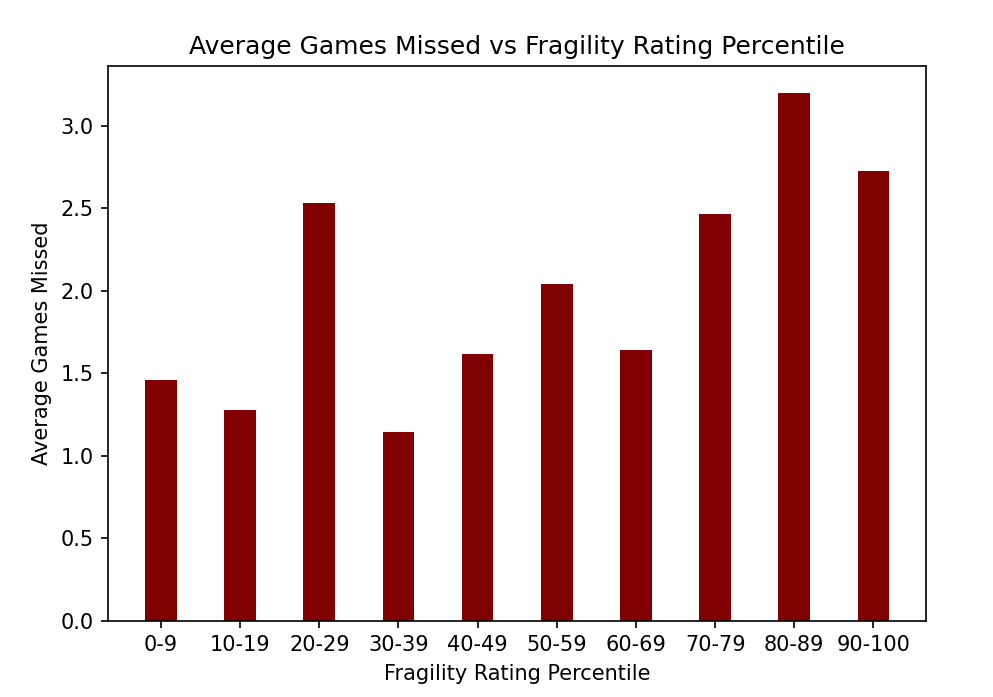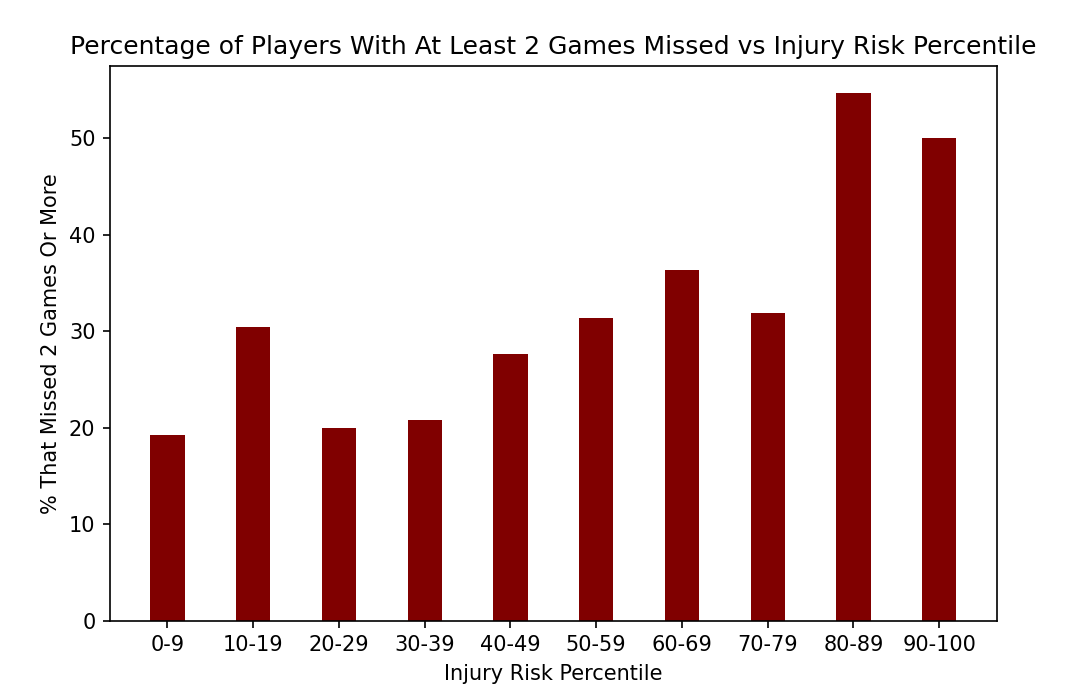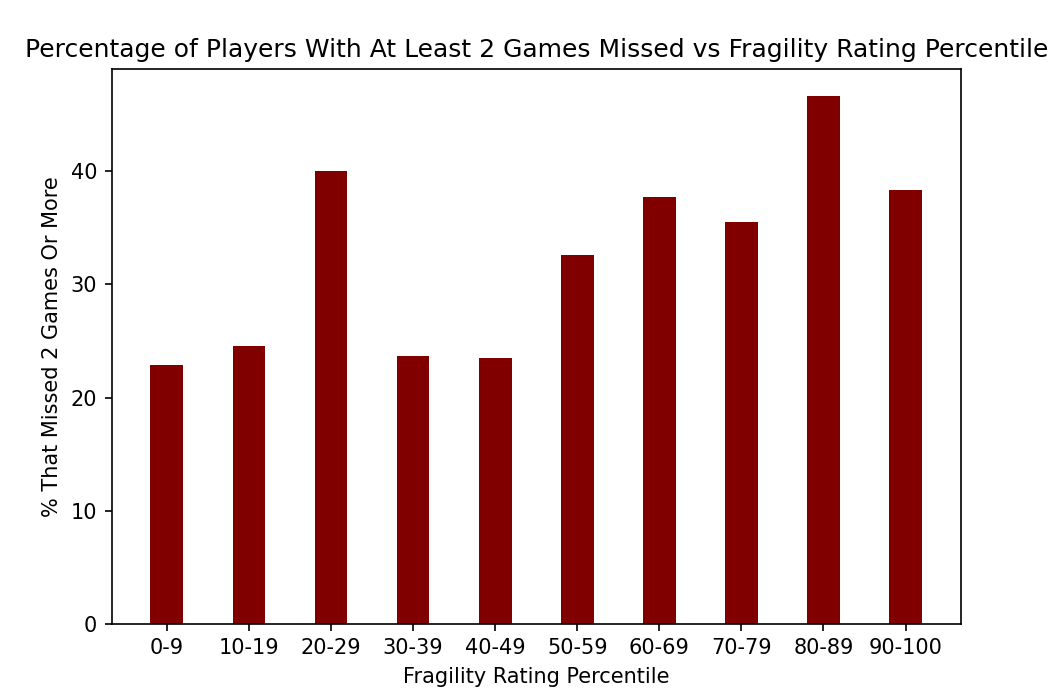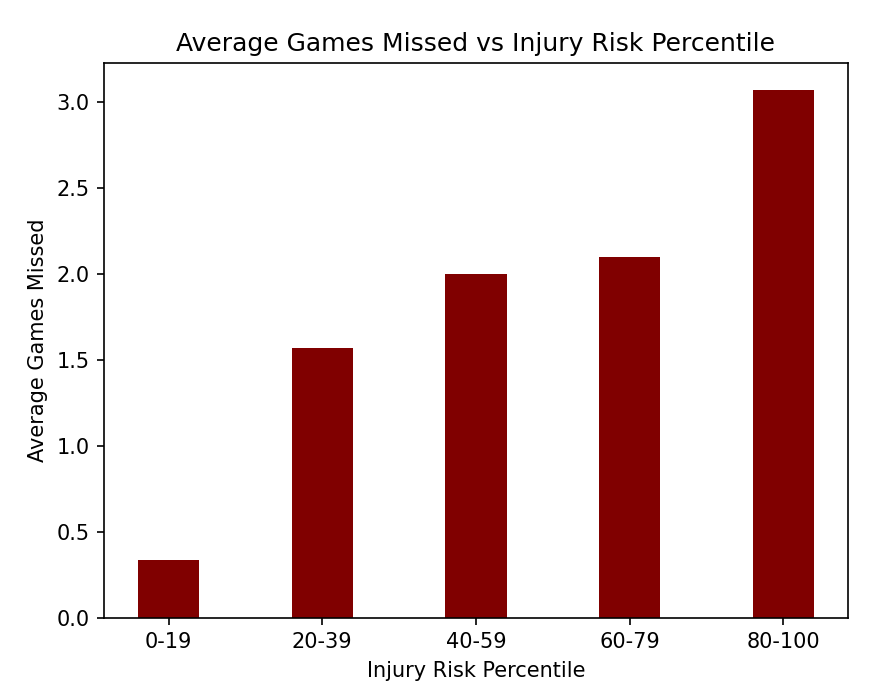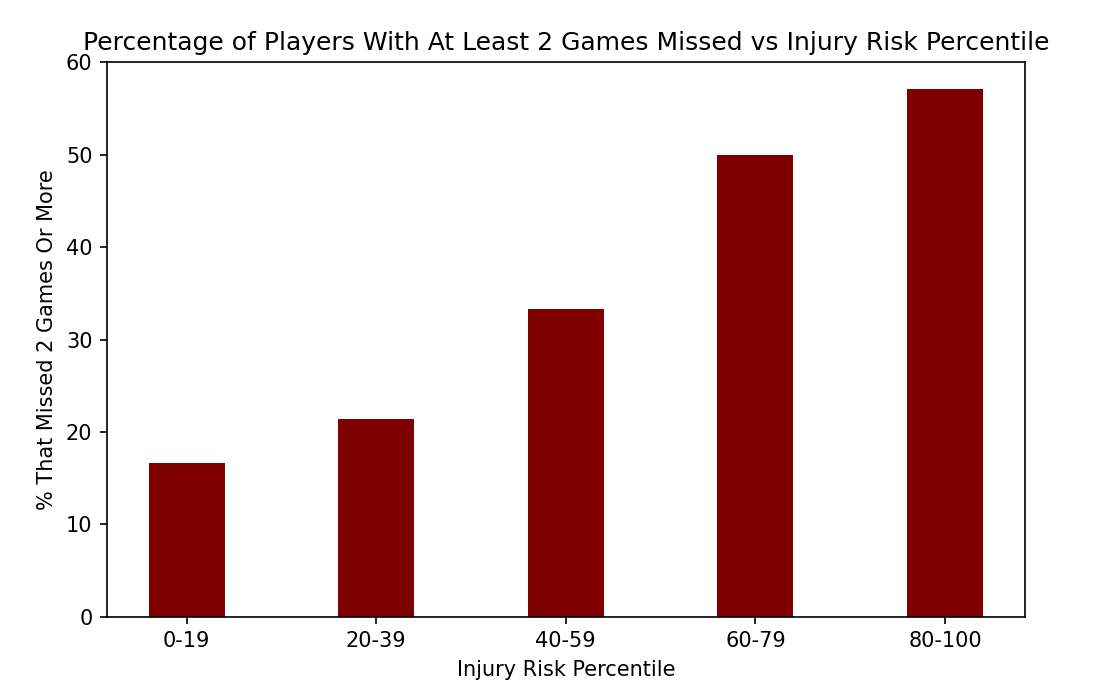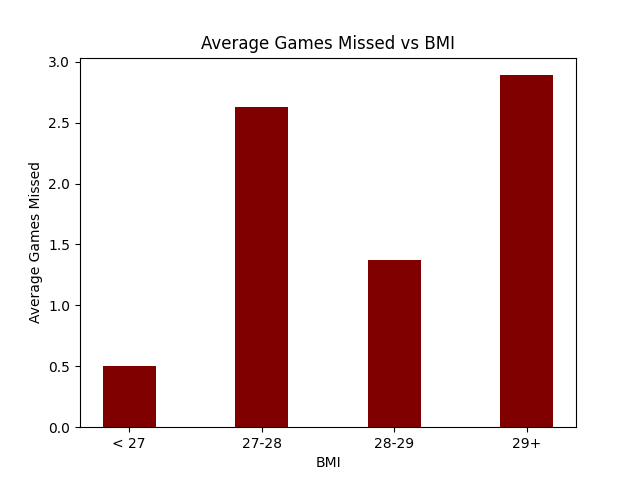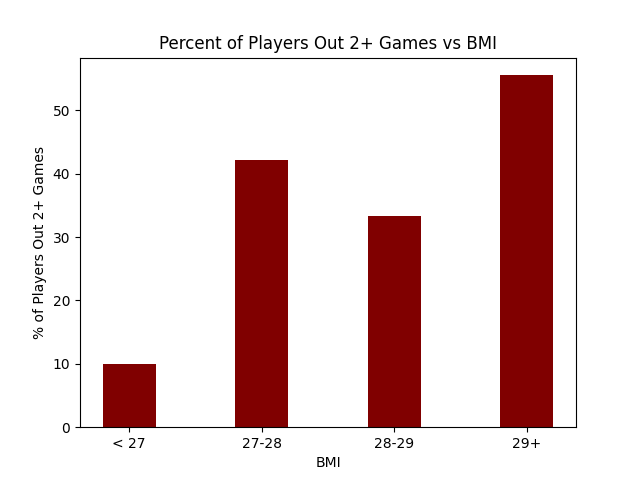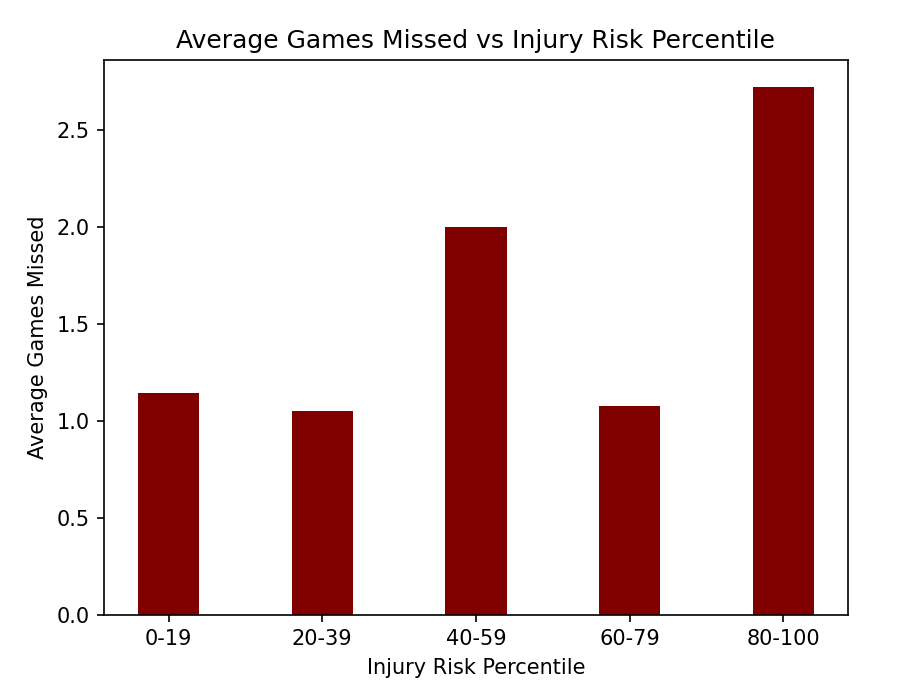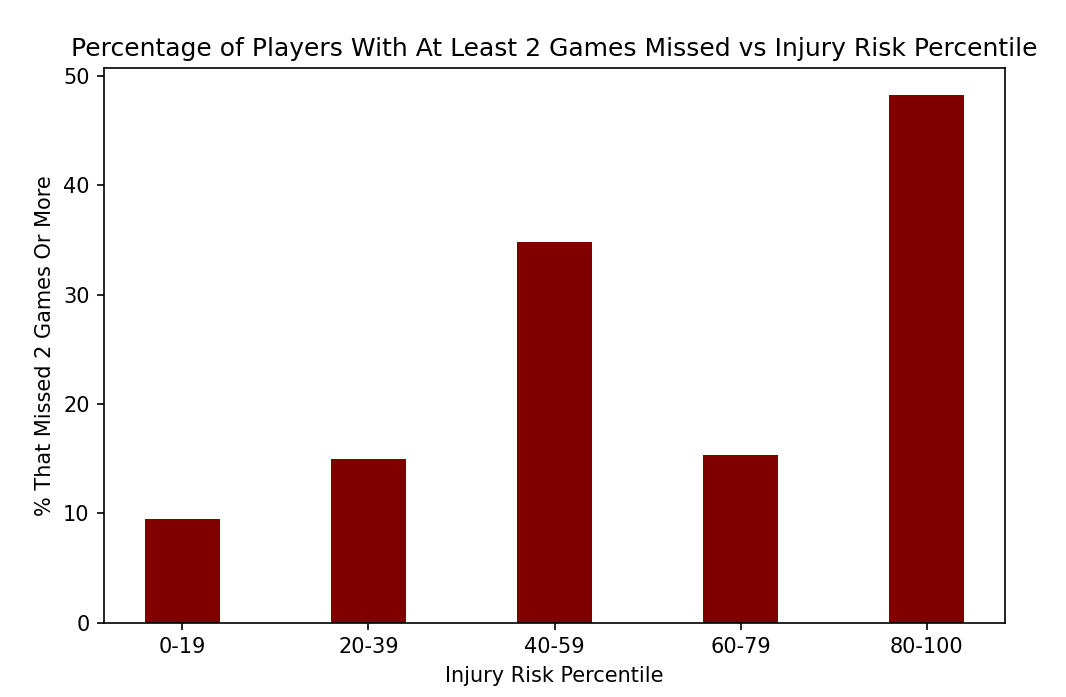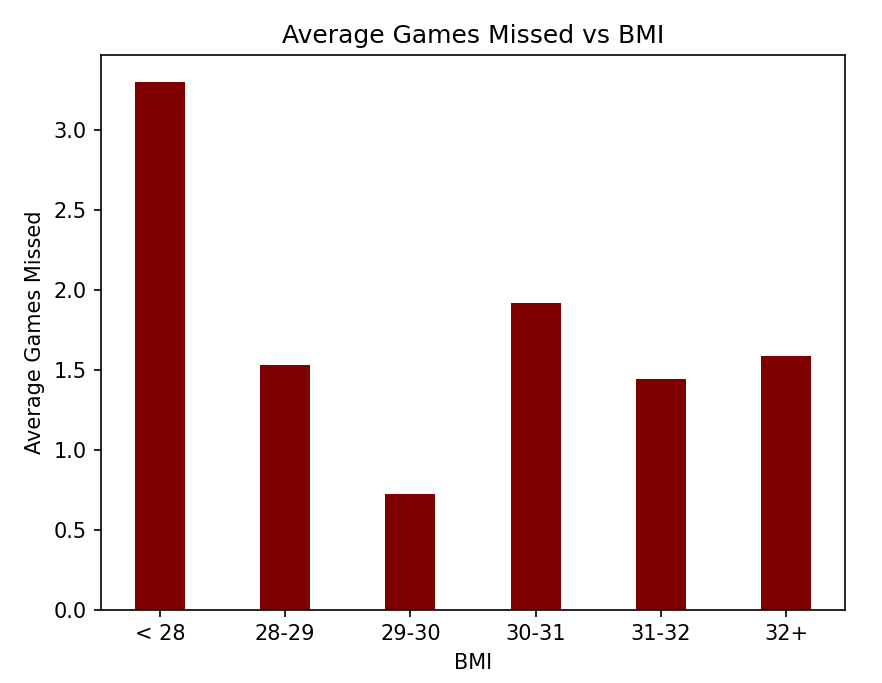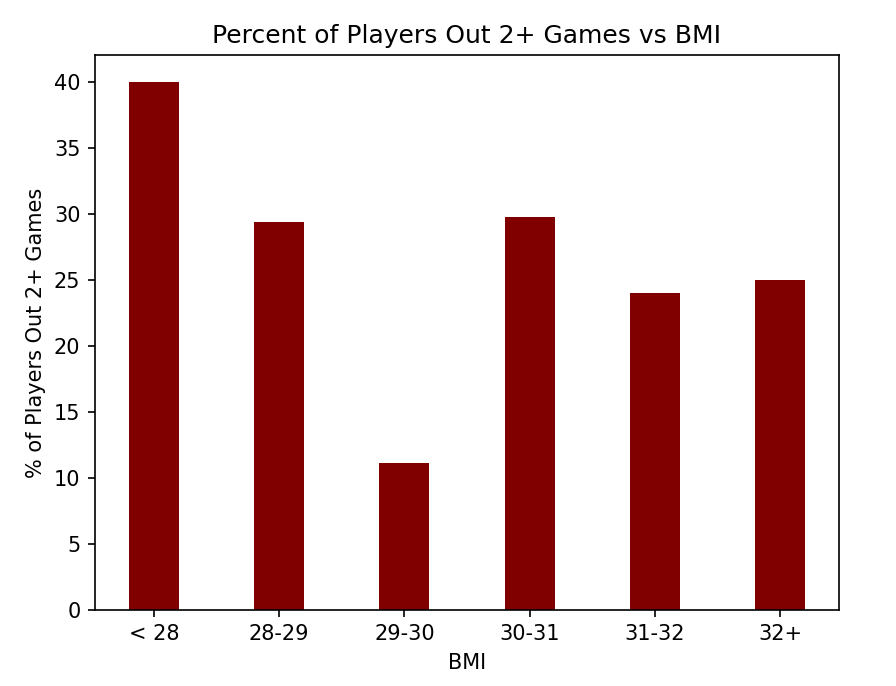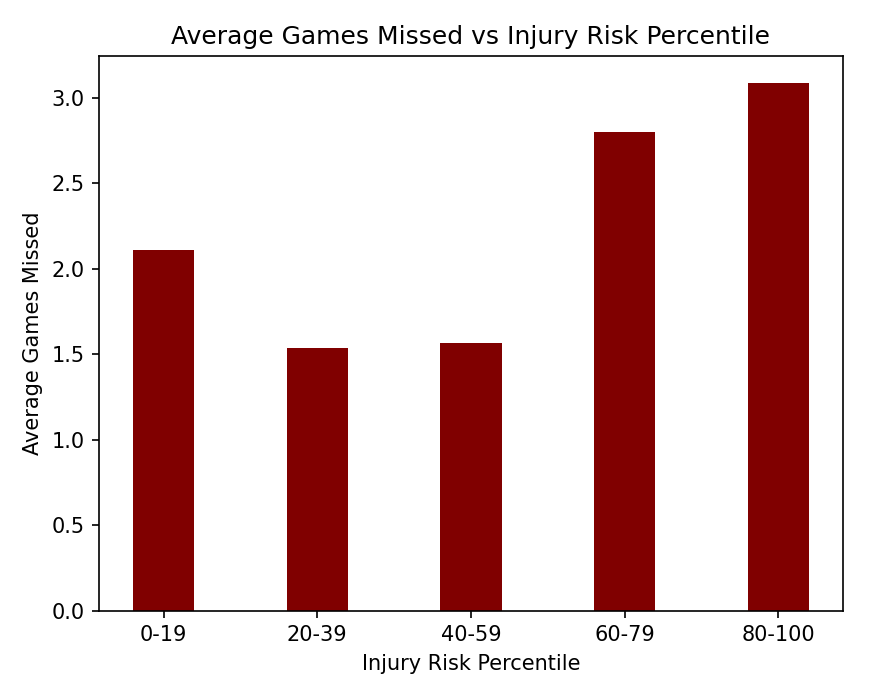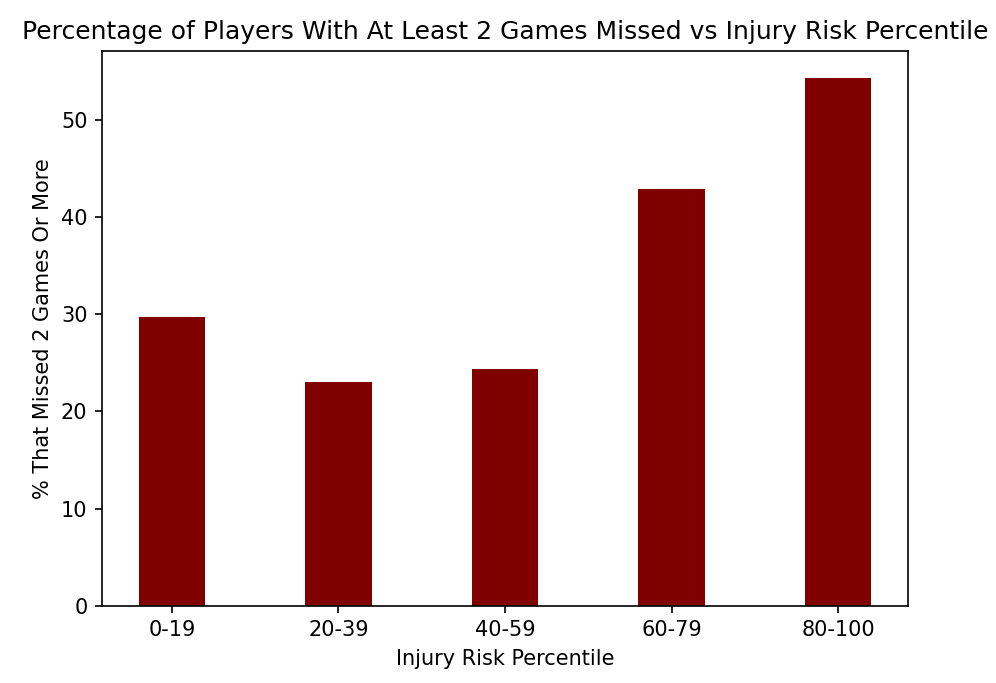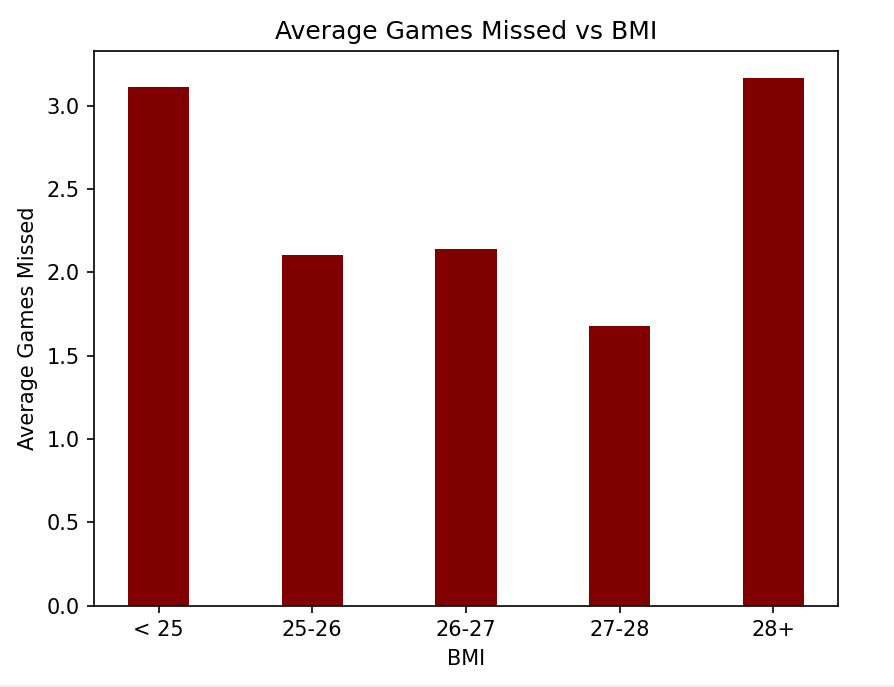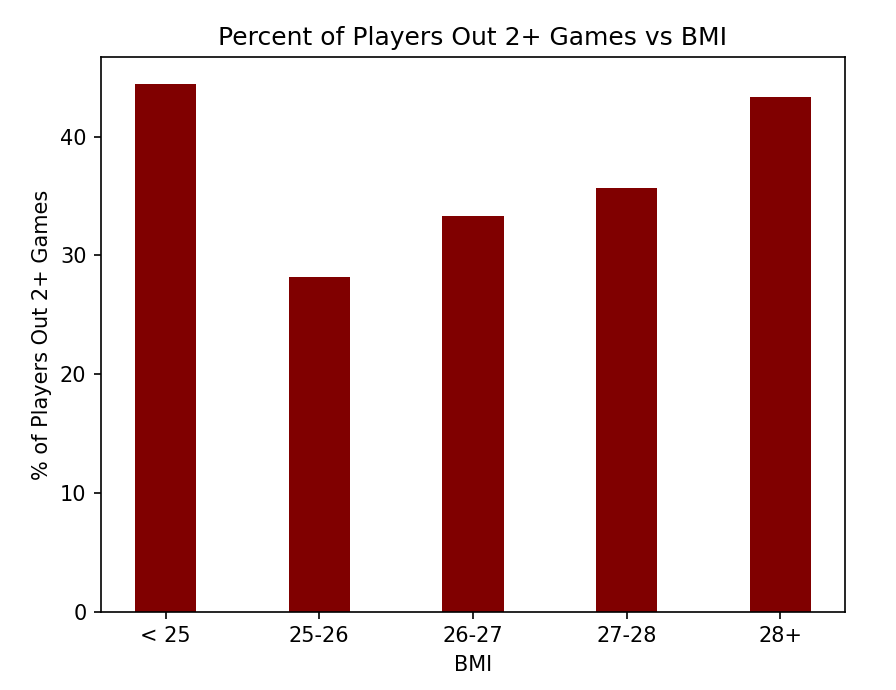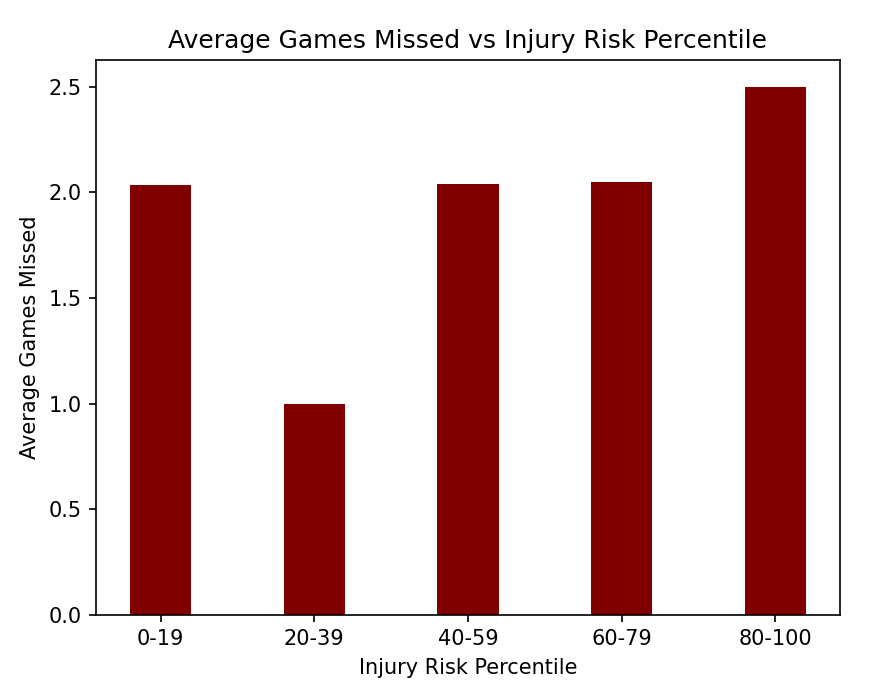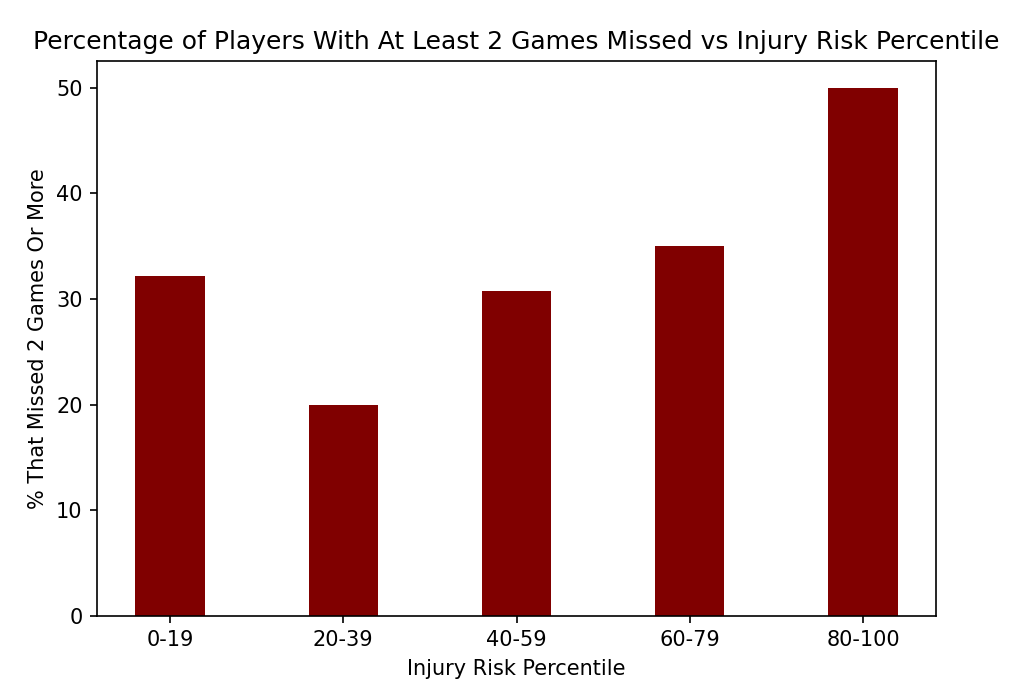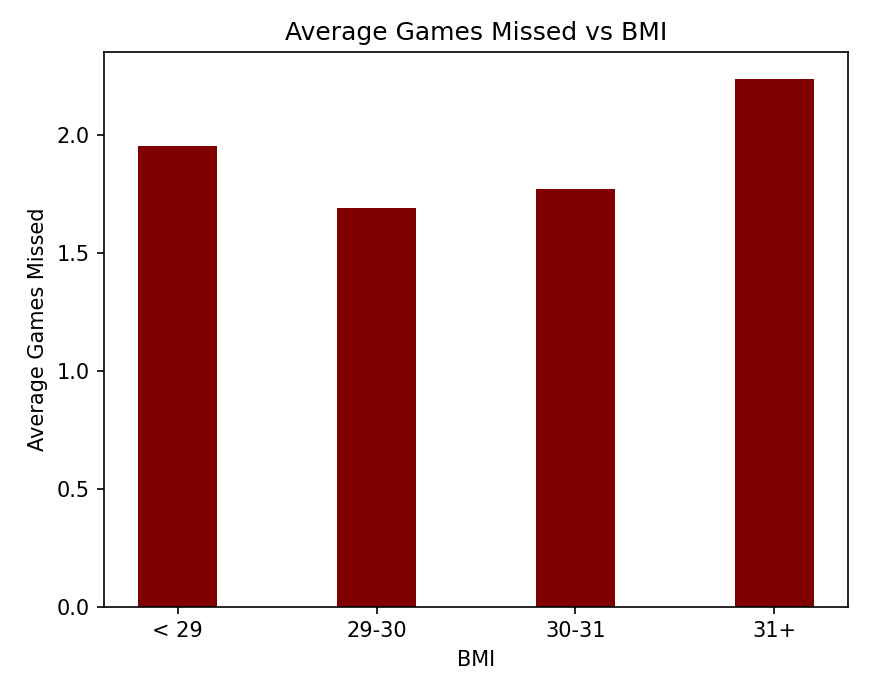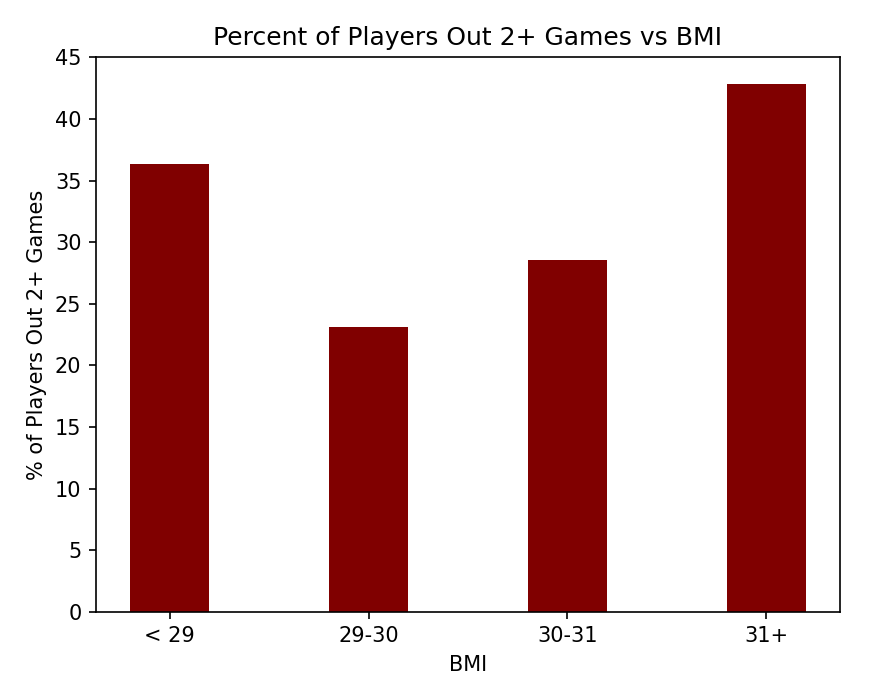This article will summarize my NFL injury analysis using Fragility Rating and Injury Risk Rating. Using these statistics, along with BMI, I’ll analyze in terms of predicting injuries at each offensive skill position during the 2022 season. It’s important to keep in mind that 17 games is a small sample, so some outliers should be expected.
Fragility Rating uses a player’s injury history to predict how likely they are to get injured on a per touch basis.
Injury Risk Rating uses a player’s projected workload, in conjunction with their Fragility Rating, to produce a rating which reflects the probability that the player will miss two or more games due to a new injury.
To view Injury Risk Ratings and Fragility Ratings for all skill position players, download the Injury Finder app, available on the App Store and Google Play Store.
Fragility Rating vs. Injury Risk Rating
Both Fragility Rating and Injury Risk Rating are effective in terms of predicting which players are the most likely to miss time. Because Injury Risk Rating incorporates a player’s projected workload, it comes as no surprise that it outperforms Fragility Rating in every way.
The graphs below show how both stats performed in terms of average games missed and the percentage of players who missed 2+ games due to injury. Injury Risk Rating clearly shows a better correlation than Fragility Rating, and the 80-100th percentile predictions of Injury Risk Rating were especially accurate. This holds true across all positions.
QB
In 2022, Injury Risk Rating performed best at the QB position. There is a clear positive correlation between Injury Risk Rating and missing games due to injury. QBs with higher projected rushing attempt totals generally translated to higher Injury Risk Ratings, and this method was successful in predicting injuries. Some QBs that fit this description in 2022 were Kyler Murray, Jalen Hurts, and Lamar Jackson, all of whom ranked above the 95th-percentile in Injury Risk Rating coming into the year.
BMI does not seem to be as predictive for QB injuries as it is for other positions, but those with a BMI above 29 were more likely to miss games in 2022.
RB
Injury Risk Rating excelled when it came to predicting the 80-100th percentile of RB injury frequencies. Some examples in this range included Rashaad Penny and Elijah Mitchell, but others such as Christian McCaffrey and Saquon Barkley were able to stay healthy. Outside of the 80-100th percentile, RBs seem to have a similar probability of injury, ignoring the clear outliers in the 40-59th percentile.
In terms of BMI, RBs below 28 were far more likely to miss time due to injury, while all other RBs seem to have relatively similar injury rates.
WR
Injury Risk Rating was extremely accurate in terms of projecting which WRs were the most likely to get injured. Those WRs in the 60-100th percentile of Injury Risk Rating were nearly twice as likely to get injured as all other WRs, as we saw this year with Sterling Shepard and Rashod Bateman.
BMI was also a strong predictor of injuries at the WR position. WRs with a BMI between 25 and 28 were significantly safer injury bets in 2022.
TE
Injuries at the TE position are the most difficult to project, but we can still find some trends. Those in the 80-100th percentile of Injury Risk Rating were more likely to miss time, but the difference isn’t as pronounced as the other three positions.
In terms of BMI, TEs below 29 or above 31 were more risky injury bets than those in the 29-31 range.
Conclusions
In general, Injury Risk Rating was quite successful in the 2022 season. It especially excelled at predicting the top end of the riskiest players to invest in. Players in the 80-100th percentile should be treated as significantly more injury-prone than the average player, while most players outside of that range should be treated as relatively equal in terms of injury probability.
BMI also seems to be an important predictor of injuries, outside of the QB position. The riskiest player archetypes in 2022 in terms of BMI were:
- RBs below 28
- WRs below 25 or above 28
- TEs below 29 or above 31.
It would be wise to slightly fade players in these ranges, as well as those in the top 20-percent of Injury Risk Rating. However, Barkley and McCaffrey proved in 2022 that risky injury bets can be worth the reward, especially if they’ve had league-winning production in the past.
To view Injury Risk Ratings for all skill position players, download the Injury Finder app, available on the App Store and Google Play Store.

